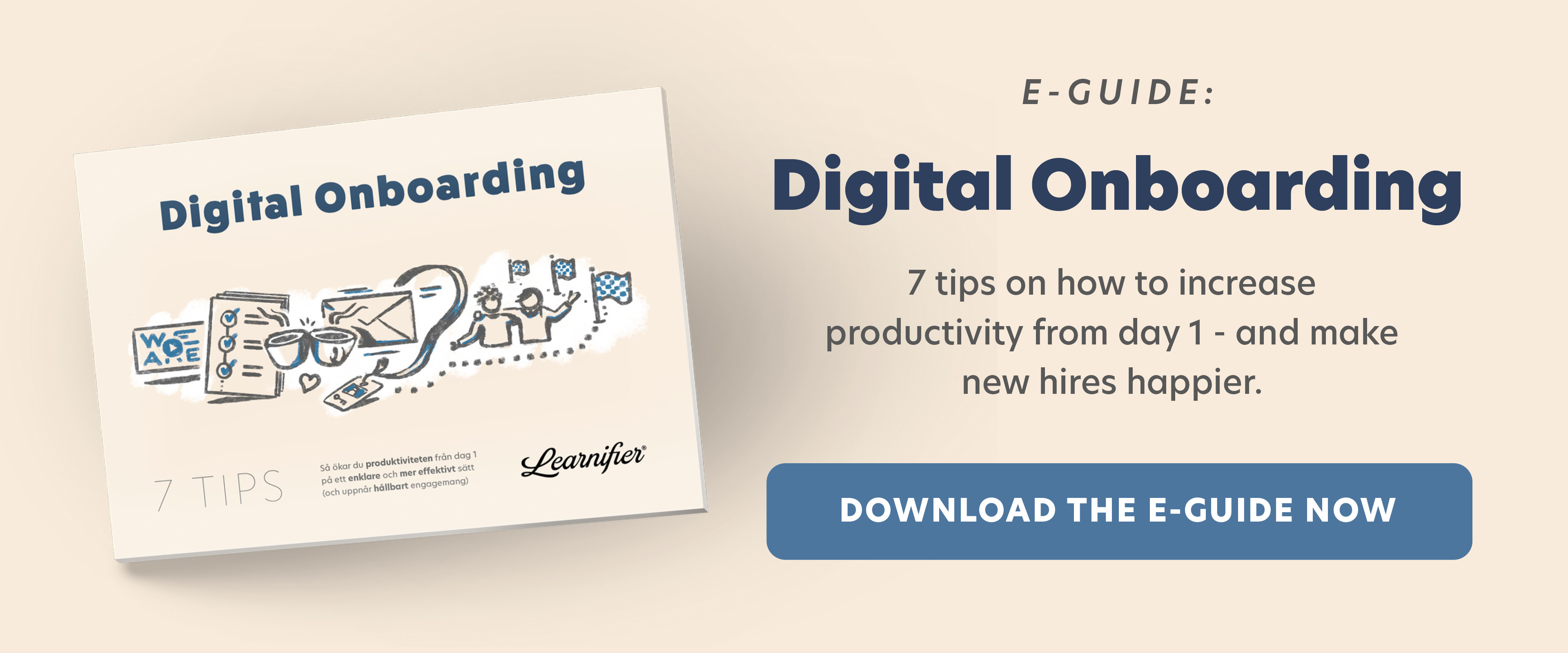First impressions matter. We all know that. Yet many companies struggle to create a smooth onboarding process that converts happy hires into productive employees. If you’re looking to create or rework your company’s onboarding, here are some common mistakes - and more importantly, how to avoid them.
1. Failing to prepare sufficiently for the first day
The employee experience is essential. You would want to stretch the excitement during the recruitment process to the first day – or longer. This means having all practicalities in place and a clear plan from the moment the person steps through the door till the end of the day. Ensure that the desk, logins, phones, or computers are ready on day one. Send the hiring manager a reminder the day before to activate the plan. Send an email to the new recruit beforehand presenting that first-day overview to make them feel extra welcome and valued - as well as calmer about what is expected of them. Make it more about meet-n-greet than about formal policies, and tune into who and what they need in order to succeed in their new role. Lastly, make sure they finish off that first day with appreciation and a clear picture of what the rest of the week looks like.
2. Forgetting to preboard (utilize the time from contract signing to the first day)
Too often, HR spends unnecessary time in the employee’s first few days handling paperwork – no employee should spend the majority of the first day filling out forms. As a hiring manager, you want to spend less time introducing the employee to tools and procedures and more time on performance. According to Global Recruiting, employees who go through a long-term, structured onboarding process will achieve full productivity 34 percent faster than those who have no onboarding at all. 83 of high-performing companies begin their onboarding process before a new hire even enters the office. Modern onboarding tools let you give new hires access to their own intro dashboard (on all devices) before they sit down at their new desk, and documentation should easily be uploaded by the employee at their convenience. This allows them to input personal details, read company policies, watch training videos, or access team structures and checklists. As a result, you can help them stay engaged in the run-up to their start date and spend more time on important meetings, face-to-face coaching, and other training processes.
3. Not Setting Clear Goals Or Expectations
An important part of onboarding is understanding and aligning the employee’s goals with those of the company. Too often people leave their job within 6 months because of unclear expectations and demotivation. In fact, Gallup research suggests that setting clear expectations may be the most fundamental element. Only about 50% of the employees in this study indicate that they know what is expected from them. Taking a closer look at Millennials, 72% of those who experience that managers help them establish performance goals are more engaged. What you need is ongoing performance evaluations and regular one-to-one with mentors or managers, spread over 3-6 months. These should consist of the employee completing training, getting to know important tools and processes, and connecting and collaborating with their team. Tools like Learnifier allow organizations to design an introduction flow with tasks and activities that can be completed over a period of time – all to avoid information overload in the beginning. Both HR and managers can then track employee progress, and engage with them throughout the onboarding period.
4. Underestimating employee engagement
Employees should really be viewed as customers, so it’s important to keep them satisfied and engaged. A Deloitte report recommends that managers work with new hires to create a development plan to achieve ‘quick wins.’ It also recommends using mentor and buddy programs to help employees connect quickly with their colleagues and better understand the company culture. You could offer your new employees a 90-day plan and check in on them regularly to quickly make them feel part of a team. You could integrate more video content in your onboarding, especially in a big organization with multiple locations. That way, they feel more comfortable and connected, even though they have not met in person. In the early stages, you might want to use surveys and one-to-one check-ins to get valuable feedback on how their onboarding process is going.
5. Failing to automate and create more time for personalized onboarding
Recruiting is expensive, and new-hire failures even more so, having invested time and resources. According to Bersin/Deloitte, the average cost per hire is $4000 or more. Getting the right talents on board is one thing, creating a successful, engaging onboarding process is another. While you aim to do both, you want to ensure that it’s effective AND efficient. Pre- and onboarding should be smooth for the newbie, and time-efficient for HR and the hiring manager. Today’s workplace is known for its mobility and shorter employee life cycles, and this tendency will only intensify, if not multiple HR’s onboarding efforts in the years to come.
This means more new hires, more admin, and more risk of reduced productivity during ramp-up periods. Too often, both HR and the hiring manager are spending time on onboarding paperwork and introductions after day one, instead of digitizing those tasks during the preboarding phase. For example, you could automate the distribution of intro videos, documents, team emails, micro training, reminder emails, etc. reducing the admin time and costs, re-using content, and setting parts of the onboarding on autopilot. In modern HR/learning tools, you can even define triggers that remind the new hire or manager to take certain actions before a certain date. That way you free up time for one-on-one meetings and other high-value tasks related to job performance. Having said that, it doesn’t mean you should automate everything. People love people. Automation should be seen as an enabler for more interaction and higher-qualified conversations, leading to productivity early on.
.png?width=153&height=58&name=Learnifier%20TextLogo%20NearBlack%20-%20PNG%20MEDIUM%20-%20800px%20(2).png)






